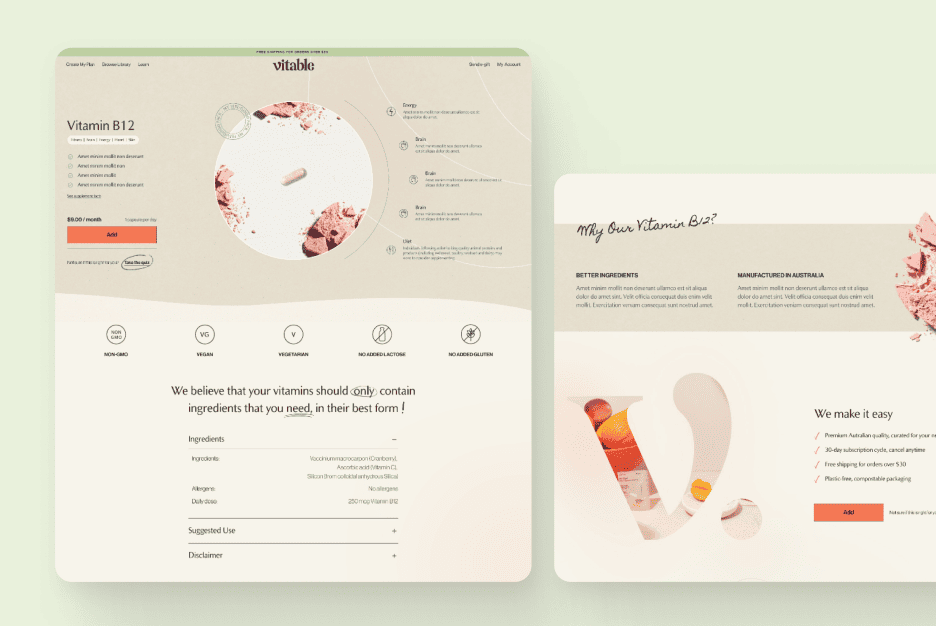The Importance of Organizational Branding
Did you know that 89% of shoppers stay loyal to brands that share their values? Organizational branding is far more than just a logo or a catchy tagline; it’s the cornerstone of your company’s identity and reputation. At Almax Design Agency, we understand the profound impact a well-crafted brand can have on your business. With over 15 years of experience, our team of Senior Plus Specialists is dedicated to offering services to turn your vision into reality. In this blog post, we will explain the importance of organizational branding, the key elements of organizational branding, how to develop a brand strategy, how to use visual design for branding, and some examples of good organizational branding. So, let’s jump in!
What is Organizational Branding?
Organizational branding is the process of creating and maintaining a cohesive and consistent identity for an organization. It involves defining and communicating the organization’s mission, vision, values, and unique value proposition to both internal and external audiences. Positioning and identity are crucial for the brand, as they help shape how the organization is perceived in the market and ensure consistency in messaging and visual elements. The goal of organizational branding is to create a strong, positive perception of the organization that differentiates it from competitors, builds trust, and fosters loyalty among customers, employees, and other stakeholders.

Brand vs Branding
Organizational branding encompasses the collective identity and perception of an organization as seen by its stakeholders, including customers, employees, and investors. It includes everything from the visual elements to the core values that define the organization. Branding, on the other hand, is the process of creating, developing, and maintaining this identity. It involves strategic efforts to shape how the organization is perceived and to ensure consistency across all touchpoints.
The Importance of a Strong Brand Identity
Branding is not just a superficial element of business; it’s a critical component that can drive significant revenue growth and market share. Research shows that companies with consistent branding see an average increase in revenue of 33%. This consistency builds brand recognition, which is crucial as 77% of consumers make purchases based on a brand name they recognize. Moreover, brand loyalty translates directly into profitability, with companies enjoying 2.5 times more revenue growth compared to those with lower brand loyalty (Kantar).
The impact of branding extends to customer trust and retention. It’s far more cost-effective to retain an existing customer than to acquire a new one—five times cheaper. Trust in a brand also influences consumer behavior, with 60% of people preferring to buy new products from brands they know.
A strong brand identity sets your organization apart from competitors and builds trust and loyalty among your audience. It is the visual and verbal representation of your brand, encompassing your logo, color palette, typography, and messaging. At Almax, we prioritize creating a cohesive brand identity that reflects your organization’s mission and values, ensuring a lasting impression on your audience.

Key Elements of Effective Organizational Branding
Effective organizational branding involves several key elements:
- Brand Identity: This encompasses the visual elements of your brand, such as logo, color palette, typography, and design elements. It also includes your brand’s voice and tone.
- Brand Purpose and Values: Clearly defined mission, vision, and values that communicate why your organization exists, what it stands for, and what it aims to achieve.
- Unique Value Proposition (UVP): A distinct statement that highlights what makes your organization different from competitors and why customers should choose your products or services.
- Consistent Messaging: Ensuring that all communications, from marketing materials to customer service interactions, consistently convey your brand’s message and values.
- Target Audience: A deep understanding of who your ideal customers are, their needs, preferences, and behaviors, to tailor your branding efforts effectively.
- Brand Experience: Every interaction a customer has with your organization, from the initial contact to post-purchase support, should consistently reflect your brand’s identity and values.
- Emotional Connection: Building a strong emotional bond with your audience through storytelling, brand personality, and values that resonate with them.
- Reputation and Trust: Establishing and maintaining a positive reputation through quality products, excellent customer service, and transparent business practices.
- Employee Alignment: Ensuring that employees understand, embrace, and effectively communicate the brand’s values and messaging, acting as brand ambassadors.
- Adaptability and Innovation: Continuously evolving and innovating to stay relevant in a changing market while staying true to your core brand identity.
- Visual and Verbal Consistency: Using consistent visual elements and language across all platforms and materials to create a cohesive and recognizable brand presence.
- Customer Feedback and Engagement: Actively seeking and incorporating customer feedback to improve and adapt your brand, fostering a sense of community and loyalty.
- Competitive Analysis: Understanding your competitors’ branding strategies and identifying opportunities to differentiate your brand effectively.

Steps to Develop a Cohesive Brand Strategy
1. Define Your Brand Purpose and Values
Clearly articulate why your organization exists beyond making a profit. Identify the core principles and beliefs that guide your actions and decisions.
2. Conduct a Brand Audit
Assess your current brand assets, messaging, and identity elements. Gather feedback from customers, employees, and other stakeholders to understand their perception of your brand.
3. Identify Your Target Audience
Define your ideal customer segments based on demographics, psychographics, and behavior. Create detailed personas to tailor your branding efforts effectively.
4. Develop Your Unique Value Proposition (UVP)
Articulate what makes your organization different from competitors. Highlight the key benefits and value that your organization offers.
5. Craft Your Brand Messaging
Develop a compelling narrative that communicates your brand’s history, mission, and vision. Create memorable taglines and slogans that encapsulate your brand’s essence. Define the tone and voice to ensure consistency across all channels.
6. Design Your Visual Identity
Create a logo that reflects your brand’s identity and is easily recognizable. Choose colors, typography, and visual elements that convey your brand’s personality and values.
7. Develop Brand Guidelines
Create a comprehensive brand guidelines document that outlines how your brand elements should be used. Educate employees and partners to ensure consistent application.
8. Implement Your Brand Strategy
Ensure that all employees understand and embrace the brand strategy. Roll out your brand identity and messaging across all touchpoints, including your website, social media, advertising, and packaging.
9. Monitor and Measure Brand Performance
Define key performance indicators (KPIs) to track brand awareness, perception, and engagement. Regularly gather and analyze feedback to identify areas for improvement.
10. Evolve and Adapt
Regularly review and update your brand strategy to stay relevant and aligned with market trends and customer expectations. Be open to new ideas and approaches to keep your brand fresh and engaging.
Leveraging Visual Design in Organizational Branding
Visual design plays a significant role in organizational branding. A well-designed logo, color palette, and typography can create a strong visual identity that is easily recognizable and memorable. For example, using contrasting colors to draw emphasis to the logo can help it stand out from the crowd and be easily recognizable to customers. At Almax, we focus on creating visually appealing designs that effectively convey your brand’s personality.
Measuring the Impact of Your Branding Efforts
Regularly measure the impact of your branding efforts to ensure they are effective. Use metrics such as brand awareness, perception, and engagement to track your brand’s performance. Analyzing these metrics helps identify areas for improvement and ensures your branding strategy remains effective.
Case Studies: Successful Organizational Branding Examples

Amazon
Brand Identity: The smile logo that connects the A to Z, symbolizing everything customers need.
Brand Purpose and Values: Customer-centricity, convenience, and a vast selection of products.
Unique Value Proposition: Fast delivery, wide product range, and a seamless shopping experience.
Consistency: Amazon’s branding is consistent across its website, packaging, and marketing efforts.
Emotional Connection: Amazon’s branding emphasizes convenience, reliability, and customer satisfaction.

Patagonia
Brand Identity: The mountain logo, outdoor-inspired aesthetics, and commitment to environmentalism.
Brand Purpose and Values: Environmental sustainability, ethical manufacturing, and high-quality outdoor gear.
Unique Value Proposition: Durable, eco-friendly products that support environmental causes.
Consistency: Patagonia’s branding is reflected in its products, stores, and marketing materials.
Emotional Connection: Patagonia’s branding appeals to environmentally-conscious consumers and outdoor enthusiasts.
These brands excel at creating a strong, cohesive identity that resonates with their target audience, maintains consistency across all touchpoints, and builds an emotional connection with customers.
Conclusion: The importance of organizational branding
In conclusion, organizational branding is an essential aspect of any business that aims to build a strong, positive perception among its stakeholders. By creating a cohesive and consistent identity, you can differentiate your organization from competitors, foster trust and loyalty, and drive significant revenue growth. Effective branding involves a deep understanding of your brand identity, purpose, values, and target audience, along with the strategic implementation of visual and verbal elements across all touchpoints.
At Almax Design Agency, we specialize in helping businesses develop and maintain robust branding strategies that resonate with their audiences and align with their core values. With over 15 years of experience and a dedicated team of Senior Plus Specialists, we are committed to turning your vision into reality and ensuring your branding efforts are both effective and impactful.
Contact Almax today to see how we can help you elevate your brand!











